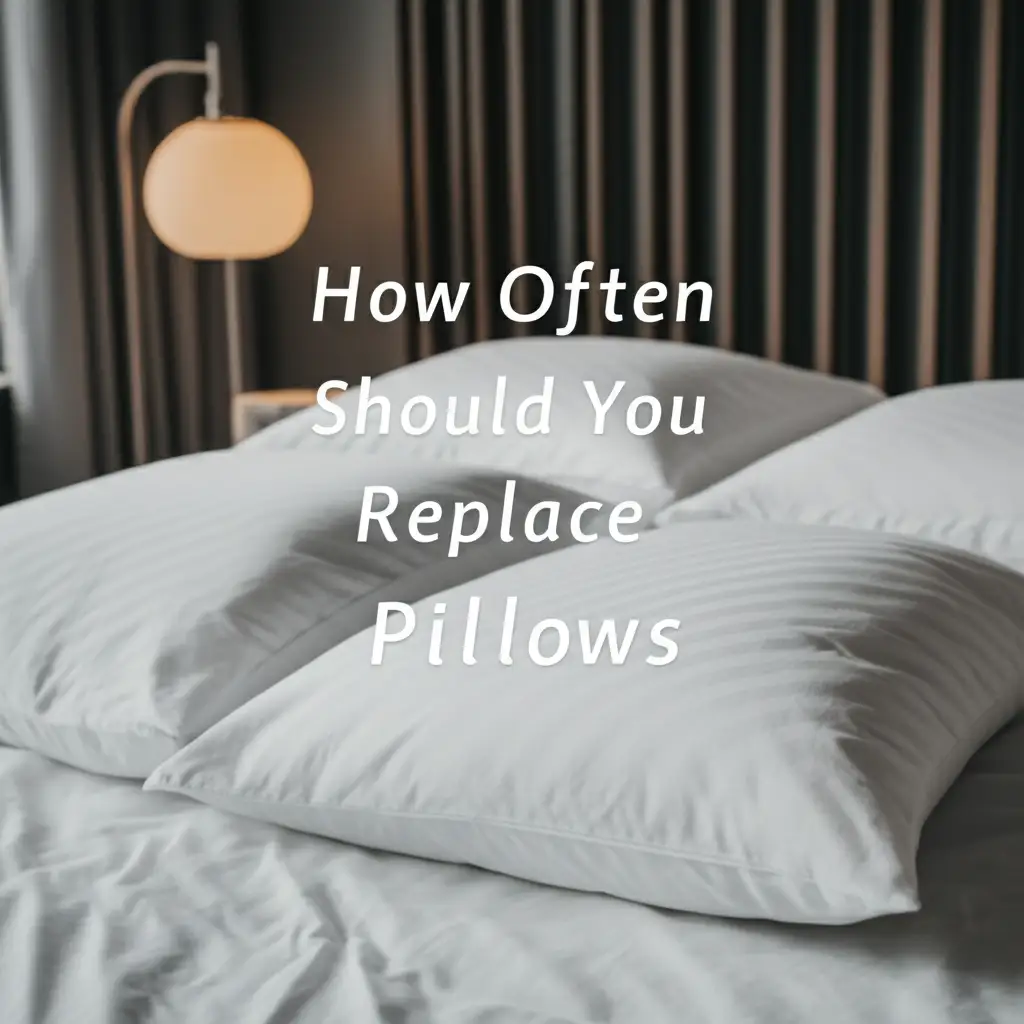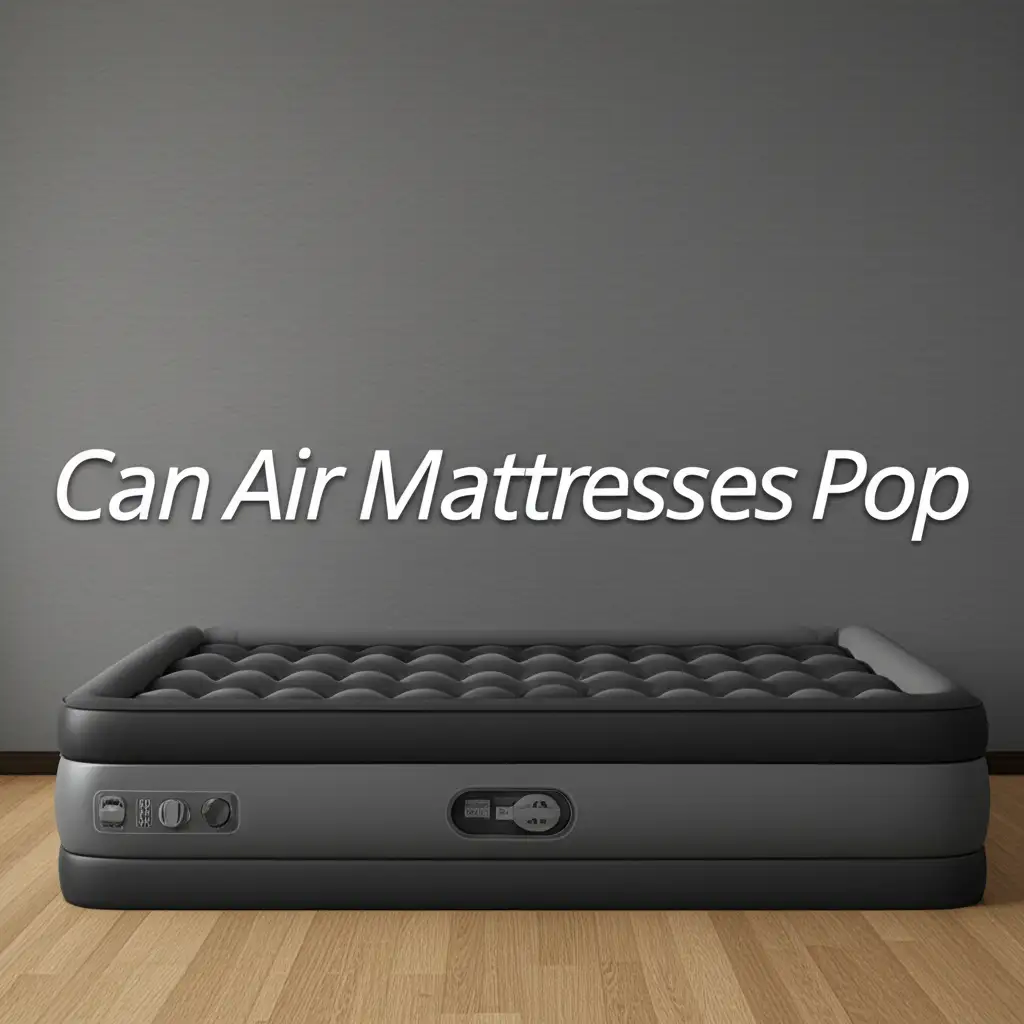· Tessa Winslow · Home Comfort · 12 min read
How Often Should You Replace Pillows

Is It Time to Refresh Your Sleep? How Often Should You Replace Pillows?
Do you wake up with a stiff neck? Do your pillows look flatter than a pancake? I know I often wonder about the hidden life of my pillows. These everyday items support our heads for hours each night. Yet, we rarely think about their lifespan. Knowing how often you should replace pillows is vital.
Old pillows can impact your sleep quality and health. They collect dust mites, allergens, and skin cells over time. This article will explore the signs of an old pillow. We will look at general replacement guidelines. You will also learn about different pillow materials and their durability. Finally, I will share tips to extend your pillow’s life. Get ready to improve your sleep environment.
Takeaway:
- Most pillows need replacement every 1-2 years.
- Watch for signs like lumps, flatness, and discomfort.
- Regular replacement improves hygiene and sleep quality.
- Care tips can help extend a pillow’s useful life.
- Match pillow type to your sleeping position for best support.
Your pillows generally need replacement every 1 to 2 years. This timeframe helps maintain proper support, hygiene, and comfort. Different pillow materials have varying lifespans. Always consider your personal comfort and pillow condition.
The Lifespan of Your Pillow: A General Guide
Have you ever thought about how long your pillow truly lasts? Most experts suggest replacing pillows every one to two years. This seems like a short time. However, pillows endure constant pressure and absorb sweat and oils nightly. This wears them down quickly.
This two-year rule is a general guideline. It helps ensure your pillow provides the best support. It also keeps your sleep environment hygienic. An old pillow loses its shape and support. It can also become a breeding ground for allergens. Let’s look closer at how material affects this timeframe.
Different Pillow Materials and Their Durability
Not all pillows are created equal. Their construction and fill material directly impact their lifespan. Knowing your pillow’s type helps you plan its replacement. You can make an informed decision for your sleep.
- Memory Foam: Memory foam pillows are known for their contouring support. They usually last longer than many other types. Expect a memory foam pillow to last about 2 to 3 years. They retain their shape well but can break down over time.
- Latex: Latex pillows are durable and resistant to dust mites and mold. They offer consistent support. A high-quality latex pillow can last 3 to 4 years. Some even last longer with proper care.
- Down/Feather: These pillows are soft and luxurious. They mold to your head and neck. Their lifespan is typically 1 to 3 years. Regular fluffing and professional cleaning can help them last longer.
- Synthetic/Polyester: These are often the most affordable pillows. They are also the least durable. Synthetic pillows flatten quickly. They tend to clump. Plan to replace them every 6 months to 2 years.
- Buckwheat/Millet: These pillows are filled with natural hulls. They offer firm, adjustable support. Buckwheat or millet pillows can last 5 years or more. You can simply replace the hulls to refresh them.
Regardless of material, proper care extends life. However, no pillow lasts forever. Consider how often you should replace pillows based on their material. Just like your mattress needs attention, your pillows do too. Deep cleaning your mattress is essential for a healthy sleep space.
Clear Signs It’s Time to Replace Pillows
Your pillow often gives clear signals when it’s ready for retirement. Paying attention to these signs saves you discomfort. It also protects your health. Ignoring these warnings can lead to poor sleep and other issues. I always check my pillows regularly for these red flags.
First, look for physical signs of wear and tear. Does your pillow have visible lumps or indentations? Does it feel flat or lumpy when you fluff it? If your pillow no longer bounces back, its support structure is gone. You might also see permanent stains from sweat or oils. Tears in the fabric are another sign. These indicate the pillow is past its prime.
Next, consider comfort and support issues. Do you wake up with neck pain, shoulder stiffness, or headaches? This often points to a pillow failing to support your head and neck correctly. Your spine needs proper alignment during sleep. An old pillow cannot provide this. You might find yourself constantly adjusting it. This can disrupt your sleep.
Finally, hygiene concerns are a big indicator. Does your pillow have a persistent odor, even after washing? Old pillows accumulate skin cells, dust mites, and their droppings. They can also grow mold or mildew in humid environments. If your allergies or asthma worsen at night, your pillow might be the culprit. A quick test for non-foam pillows is the “fold test.” Fold the pillow in half. If it doesn’t spring back to its original shape, it’s time for a new one. Your pillow is an investment in your well-being, just like keeping your mattress clean for better sleep. Consider exploring tips on how to deep clean your mattress to maintain overall bed hygiene.
Health and Hygiene: Why Regular Pillow Replacement Matters
Replacing your pillows regularly is not just about comfort. It is crucial for your health and hygiene. Old pillows become breeding grounds for unseen issues. This can impact your respiratory system and skin health. I never underestimate the power of a clean sleep environment.
The biggest culprits in old pillows are dust mites. These microscopic creatures thrive in warm, humid environments. Your pillow provides the perfect home. Dust mites feed on dead skin cells. An old pillow can contain millions of them. Their droppings are a major allergen. This can trigger allergies and asthma symptoms. Symptoms include sneezing, runny nose, itchy eyes, and difficulty breathing.
Beyond dust mites, pillows absorb sweat, body oils, and saliva. Over time, these create a damp environment. This encourages the growth of mold and mildew. These fungi can also cause respiratory problems. They can worsen allergies. The accumulation of oils and skin cells on your pillow can also lead to skin issues. This includes acne or rashes, especially on your face.
Regular pillow replacement helps maintain improved air quality in your bedroom. Fewer allergens and pathogens mean you breathe cleaner air. This is especially important for people with sensitivities. A fresh pillow contributes to a healthier sleep environment. It reduces your exposure to common irritants. Just as you maintain the air quality in your home by cleaning vents, fresh pillows play a role too. Learning how to clean air vents can help improve overall air circulation and reduce allergens in your living space.
Enhancing Your Sleep Quality with Fresh Pillows
A new pillow can dramatically improve your sleep quality. This is more than just feeling soft. It is about providing the right support for your body. I have experienced the difference a fresh pillow makes. The improvement in sleep is truly remarkable.
First, a fresh pillow ensures proper spinal alignment. Your head and neck need consistent support while you sleep. An old, flat pillow fails to keep your spine in a neutral position. This misalignment can strain muscles and nerves. A new pillow fills the gap between your head and mattress. It keeps your neck aligned with your spine. This promotes a healthier posture.
Second, new pillows lead to reduced pain and discomfort. When your neck and spine are properly aligned, tension eases. This helps relieve common aches. Headaches, neck stiffness, and shoulder pain can lessen significantly. You wake up feeling refreshed and pain-free. This directly contributes to a better start to your day.
Third, the comfort of a new pillow fosters deeper, uninterrupted sleep. When you are comfortable, you toss and turn less. This allows you to spend more time in restorative sleep stages. Deep sleep is essential for physical and mental restoration. You will find yourself waking up less during the night.
Finally, better sleep contributes to overall well-being. Consistent, quality sleep improves mood, concentration, and energy levels. It strengthens your immune system. Investing in new pillows is an investment in your health. It helps you function at your best every day.
Extending Your Pillow’s Life: Care and Maintenance Tips
While pillows have a limited lifespan, proper care can help them last longer. Regular maintenance keeps them cleaner and more supportive. This also delays the need for replacement slightly. I always try to take good care of my pillows to maximize their use.
First, use pillow protectors. These zippered covers add an extra layer of defense. They protect your pillow from sweat, oils, dust mites, and spills. Pillow protectors are easier to wash than the pillow itself. They significantly extend the life and cleanliness of your main pillow.
Second, wash your pillows regularly. Most pillows, especially synthetic and down, can be machine washed. Always check the care label for specific instructions. Use a gentle cycle with mild detergent. For best results, wash two pillows at a time. This balances the washing machine load. Ensure they are completely dry before reuse. Damp pillows can develop mold or mildew.
Third, fluff your pillows daily. This simple act helps redistribute the fill material. It restores the pillow’s loft and shape. Fluffing prevents lumps and keeps the pillow from compacting. It also airs out the pillow, reducing moisture buildup.
Fourth, air out your pillows periodically. On a sunny, dry day, hang your pillows outdoors. Sunlight helps sanitize them. It also removes moisture and odors. This refreshes the pillow. Do this every few months.
Finally, address spills and stains promptly. Blot spills immediately. Follow the pillow’s cleaning instructions for stain removal. Quick action prevents stains from setting. It also stops moisture from penetrating the fill material. Just like cleaning pet stains from your carpet, quick action is key for pillows. You might find general tips for tackling spills in articles about how to clean carpet stains pets.
Choosing Your Next Pillow: Matching Needs to Materials
When it’s time to replace pillows, choosing the right one can feel overwhelming. There are many options available. Selecting the best pillow ensures you get the support you need. It also maximizes your comfort. I always consider a few key factors when buying a new pillow.
First, consider your sleeping position. This is the most important factor. Side sleepers often need a firm, thick pillow. This fills the space between their head and shoulder. It keeps the neck aligned. Back sleepers typically need a medium-firm pillow. This supports the natural curve of the neck. Stomach sleepers generally need a soft, flat pillow. This prevents the neck from arching too much.
Second, think about the support level you prefer. Do you like a firm feel that holds its shape? Or do you prefer a soft, plush pillow that cradles your head? Pillow materials offer different levels of firmness and support. Understanding your preference helps narrow down choices.
Third, consider any allergy considerations. If you suffer from allergies, choose hypoallergenic materials. Latex and memory foam are naturally resistant to dust mites. Some synthetic pillows are specifically designed for allergy sufferers. Down pillows might not be the best choice for severe allergies.
Fourth, understand the benefits of different materials.
- Memory foam contours to your unique shape. It offers excellent pressure relief.
- Down and feather pillows are soft and luxurious. They are very moldable.
- Latex pillows are durable and resilient. They offer responsive support.
- Synthetic fibers are affordable and often machine washable. They are a good option for a basic, easy-care pillow.
Investing in the right pillow is an investment in your sleep. It supports your body and health. Choosing a pillow that matches your specific needs is key. It ensures you wake up feeling refreshed and ready for the day. This contributes to your overall sense of well-being. Looking after yourself, from sleep to daily routines, helps you look and feel clean and healthy.
FAQ Section
Can washing extend a pillow’s life indefinitely?
Washing your pillow regularly helps keep it clean and hygienic. It can remove allergens and freshen the fabric. However, washing does not restore lost support or shape. It cannot reverse the breakdown of the fill material. Therefore, washing extends hygiene but not the structural lifespan indefinitely.
What happens if I don’t replace my pillows?
If you do not replace your pillows, you risk poor sleep quality and health issues. Old pillows lack proper support. This can cause neck pain, headaches, and general discomfort. They also accumulate dust mites, allergens, and bacteria. This can trigger allergies, asthma, and skin problems.
Are expensive pillows more durable?
Generally, yes, more expensive pillows tend to be more durable. High-quality materials like latex and premium memory foam often last longer. They also maintain their support better over time. However, even the most expensive pillows have a finite lifespan. They still need replacement after several years.
How do I know what kind of pillow I have?
You can often determine your pillow type by checking its care label. The label usually lists the fill material. If there is no label, you can identify it by feel. Synthetic pillows feel soft and springy but flatten easily. Memory foam feels dense and molds slowly. Down feels very soft and compressible. Latex feels springy and resilient.
Should I replace all my pillows at once?
You do not necessarily need to replace all your pillows at once. Prioritize the pillows you use for primary sleep. Guest pillows or decorative pillows do not need replacement as often. Focus on the ones that support your head and neck every night. Replace others as needed or when they show signs of wear.
Conclusion
Understanding how often you should replace pillows is a simple step towards better health. It helps improve your sleep and overall comfort. We have covered the signs of wear, typical lifespans, and care tips. We have also explored the crucial link between pillow hygiene and your well-being. Investing in new pillows is not an indulgence. It is a necessary part of maintaining a healthy sleep environment.
Regularly assessing your pillows ensures proper neck support and a reduction in allergens. This leads to more restful nights. Remember the general guideline: most pillows need replacement every 1 to 2 years. Pay attention to how your pillow feels and looks. Do not let an old, unsupportive pillow stand between you and a great night’s sleep. Take action today. Check your pillows and replace them if needed. Your body will thank you for it.





